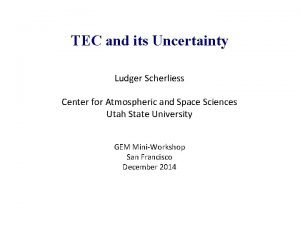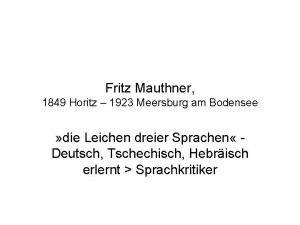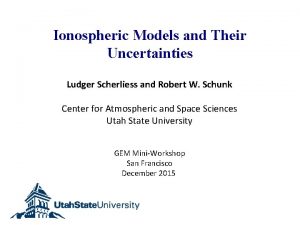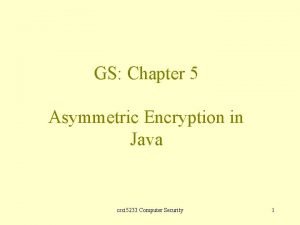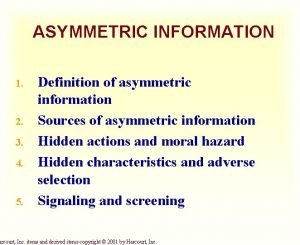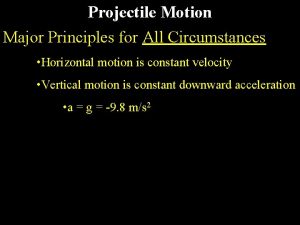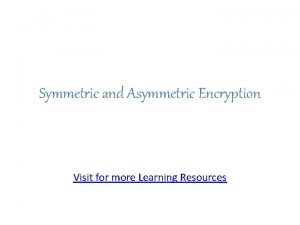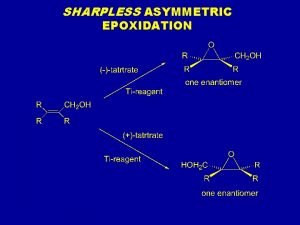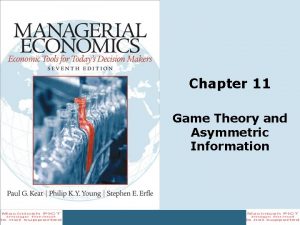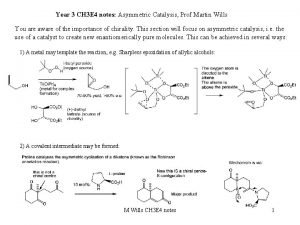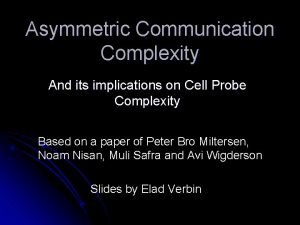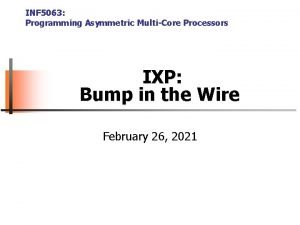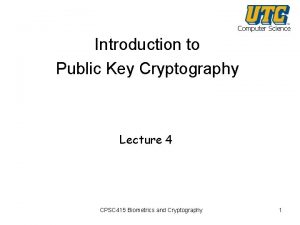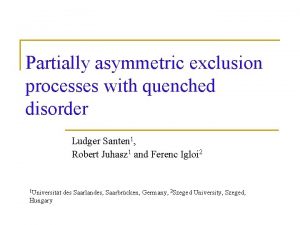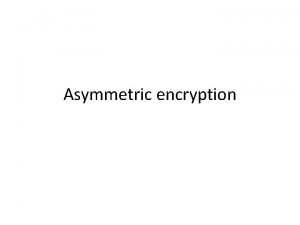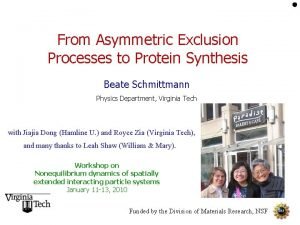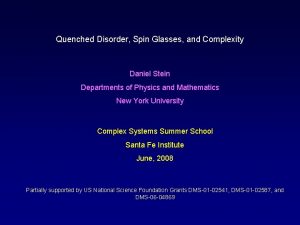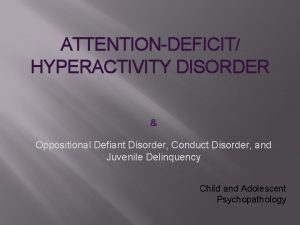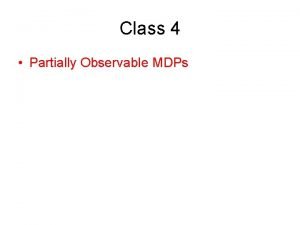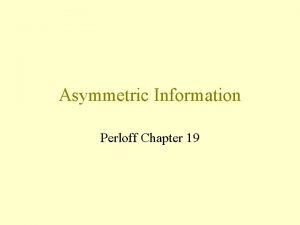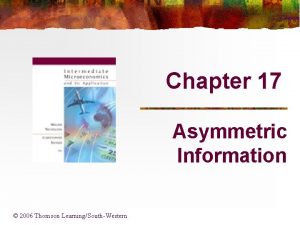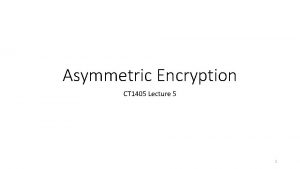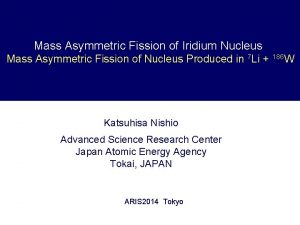Partially asymmetric exclusion processes with quenched disorder Ludger






















- Slides: 22

Partially asymmetric exclusion processes with quenched disorder Ludger Santen 1, Robert Juhasz 1 and Ferenc Igloi 2 1 Universität Hungary des Saarlandes, Saarbrücken, Germany, 2 Szeged University, Szeged,

The ZRP with strong disorder: Definition n n ASEP with particlewise disorder Hopping rates: pi (forward) qi (backward) Direction of the bias is random L sites and N particles

Realisations of the disorder Control Parameter δ • Asymmetry between forward and backward rates • δ>0 (δ<0): Bias to the right (left) Uniform distribution (p 0 >0) Bimodal distribution

Stationary solution of the ZRP Stationary weights have factorised form: where: Ansatz & stationary master equation:

Stationary solution of the ZRP Solution of stationarity condition: Conserved quantity: Choice (const=1):

Infinite Particle Limit Partition function Current: Occupation probability & density profile

Properties of the random variables Idenfication ↔ g Kesten variables Asymptotic behaviour (L→ ∞, δ>0): Scaling of g. L (inverse current): Example: Bimodal distribution

Hopping rates and energy landscape Construction of the landscape: Size of the excursions: Probability of transversal excursions:

Strong disorder RG Decimation of a site i: Effective rates: Renormalized current:

Properties of the RG n J & remaining g‘s are invariant n Elimination of the largest rate n Ω is gradually decreasing n Approximation (asymptotically exact): forward rate decimation: backward rate decimation

SDRG: Results The unbiased case (δ=0): Relation between rate-scale and clustersize Accumulated distance: Current fluctuations:

SDRG: Results The biased case (δ>0): Existence of a limiting time scale τ~1/Ωξ Ω > Ωξ: elimination of forward and backward rates Ω < Ωξ: TASEP with rates: Relation between rate-scale and clustersize

SDRG: Results The biased case (δ>0): Current distributions

Stationary state: Transport properties z=0: Uniform bias Situation similar to the TASEP Griffith Phase: 0<z<1 : Current J~L-z : Active Particles Na~L 1 -z Na=O(1) Particle velocity v=O(1) v~L-z z→∞: Cumulated distance

Distribution of particles Active particles: Many particle Transport (z<1): Single particle Transport (z>1): • L 1 -z active particles • Finite number of active particles • Accumulated distance: X~t 1/z Inactive particles • Particles in the „cloud“: The condensate is attractive; excursions of length ξ • Subleading extrema of the energy landscape

Density profile (Griffith phase) n n Position of the condensate: finite boundary layer of width: i=M

Density profile at criticality (d=0) n Scaling form:

Approaching the stationary state Renormalisation group analogous to real coarsening Clustersize ~distance between occupied sites Length scale Distance l behaves as (z<∞) : Critical point (z→∞)

Coarsening in the Griffith phase n Size of the condensate (determines the variance of the occupation number):

Coarsening at criticality n Critical point: n Scaling: Anomalous coarsening

Particle & sitewise disorder

Summary n TASEP with particle disorder: condensation of holes at low densities Strong disorder: Griffith phase n Criticality: n Site disorder: n
 Ludger scherliess
Ludger scherliess Ludger lütkehaus
Ludger lütkehaus Ludger scherliess
Ludger scherliess Ludger pries
Ludger pries Conversion disorder
Conversion disorder Concurrent in os
Concurrent in os Asymmetric encryption java
Asymmetric encryption java Extreme spbm
Extreme spbm Asymmetric information diagram
Asymmetric information diagram Vy=voy-gt
Vy=voy-gt Asymmetric key cryptography
Asymmetric key cryptography Inter vlan routing教學
Inter vlan routing教學 Sharpless asymmetric epoxidation
Sharpless asymmetric epoxidation Asymmetric information game theory
Asymmetric information game theory Asymmetric synthesis notes
Asymmetric synthesis notes Two-way asymmetric model
Two-way asymmetric model Vlan table
Vlan table Asymmetric communication
Asymmetric communication Asymmetric multicore processing
Asymmetric multicore processing Symmetric and asymmetric matrix
Symmetric and asymmetric matrix Cryptography computer science
Cryptography computer science Asymmetric vlan
Asymmetric vlan Asymmetric vlan
Asymmetric vlan
